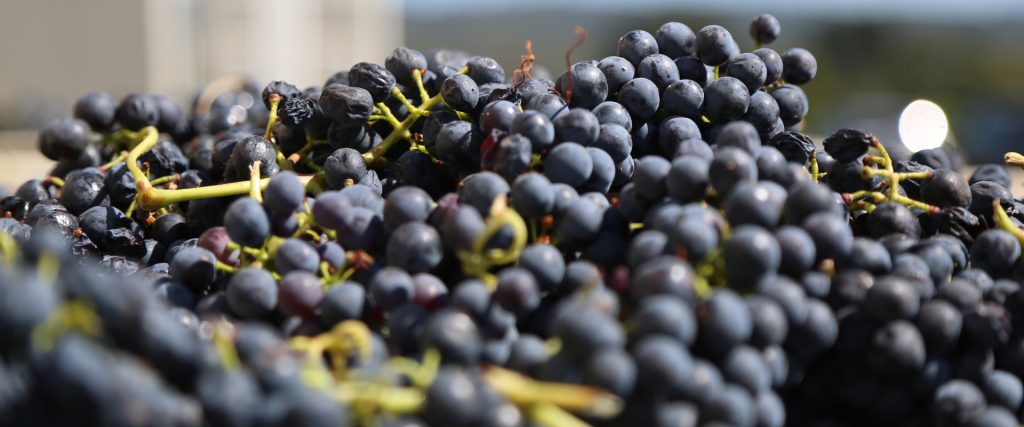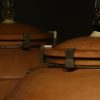Up until 2015, when Argentina’s meteorological cycle changed, vintages didn’t seem to vary much. Of course each had its subtle differences but overall they were fairly homogenous. However, since 2015, each vintage has had its own clearly discernible personality, some unforgettable while others won’t be missed if we never see the likes of them again.
In this ´Argentina vintage report´ we present an overview of each harvest, from 2015 to 2019.
Argentina vintage report: the challenging 2015 harvest
Never before was climate change so much on people’s lips as in 2015. The year began as a typically hot Mendoza summer but soon turned rainy and cool resulting in reduced yields at several large vineyards. Meanwhile, the Uco Valley suffered from hail storms that hit some of the area’s best vineyards.
Things began to settle down in February, allowing oenologists to turn the tables, producing wines of good quality and concentration. Nonetheless, preventative action became a priority as the El Niño effect had clearly hit the region.
San Juan, meanwhile, enjoyed a hot, dry harvest season beginning, for some of the white grapes, at the end of December. Yields were good and quality was impeccable.
2015 was somewhat hotter than normal in the Calchaquí Valleys so in some areas the harvest was brought forward by up to three weeks without compromising on quality.
In Patagonia, the 2015 harvest took place without too many hiccups, with excellent results seen in both Río Negro and Neuquén.
2016: unique and unforgettable
The 2016 harvest has a special place in the memories of Argentine winemakers and had a significant effect on their wines too. This was an unusual year deeply affected by the El Niño phenomenon, which saw reductions in yield of 27% and proved once again that, like the 1998 harvest, El Niño vintages are truly distinctive.
It all began with a cold 2015 spring leading to late budding and uneven growth. Everyone thought they were ready but the El Niño effect turned out to be even more severe than expected. The most significant statistic was the rainfall, which was four times higher than average.
In Mendoza, it was a cold, rainy, cloudy summer that required a lot of work in the vineyards to keep the vines and grapes healthy. But the fact that phenols developed earlier than sugars had many producers on the ropes. ‘It would have been a typical year in Bordeaux, but we were in Cuyo,’ says the winemaker Alejandro Cánovas.
As a result, many producers, those with the infrastructure to do so, brought their harvests forward, which explains by 2016 reds are generally fresher and less alcoholic than usual for Mendoza while whites benefited from an unforgettable tension.
2017: a return to normality
After the poor 2016 harvest, 2017 began with similarly unfavourable climatic conditions but fortunately these were overcome and grape yields improved by 20% across the entire country.
In Mendoza, 2017 marked a return to the traditional climate although October frosts delayed growth and a cool December held back ripening. That meant that some grapes started to ripen before others, but higher than average summer temperatures evened things up. A January heat wave accelerated the ripening of varieties such as Pinot Noir but the return of cooler weather then brought things back to normal.
In spite of these fluctuations, excellent quality fruit was obtained, giving rise to intense, profound reds with good amounts of tannin.
In San Juan, the second largest winemaking province, the 2017 harvest came early with fresher, less alcoholic wines. In the Calchaquí Valleys it was a year of low rainfall; just 150 mm fell in the entire season, and mild temperatures. The harvest produced higher yields with excellent results for Malbec, Tannat and Torrontés.
Meanwhile, in Patagonia it was a year that produced elegant wines in spite of unusual climatic conditions, with frosts that reduced yields by up to 40%, intense winds during flowering and a warm summer that brought the harvest forward.
2018: a classic
The 2018 season was an excellent one for Argentine wine. Especially when you take the previous two years into account.
In Mendoza it was agreed to be ‘a typical year’: the winter was very cold and the spring dry but cool, delaying budding and holding the overall cycle back by about 15 days. Some regions in the Uco Valley and Luján de Cuyo were hit by October frosts but they didn’t affect yield or quality.
Temperatures in January and February were in line with historical averages, while rainfall was lower than usual, favouring the harvest, whose yields came close to historical records.
Rogelio Rabino, the winemaker at Kaiken, remembers the 2018 season as ‘standing out for the thickness of the grape skin thanks to the thermal range, leading to wines with good colour and acidity. The whites were exceptional with good concentration and elemental flavours.’
In Salta, Catamarca, Tucumán and Jujuy it was a cooler than average season with a rainy harvest initially. Reds ripened earlier than expected resulting in less alcoholic wines from Calchaquí vineyards. In Patagonia it was regarded as a good but unusual year. Average temperatures were higher than usual so the harvest began and ended early.
2019: one for the history books
After a slew of challenging seasons, 2019 was exceptional throughout the country. The key was a mild climate leading to a longer harvest carried out along traditional parameters for whites and reds.
An important point is that the climate was similar up and down the country, from the Calchaquí Valleys to Patagonia, and the perfect ripeness of the grapes went down in history.
Following a cold 2018 winter and damp, cool spring, 2019 started with a dry summer with moderate temperatures and warmer than usual days. The grapes didn’t ripen until the end of January, when the high temperatures remained stable. In February, the mild climate returned and in March everything had gone back to normal.
Sebastián Zuccardi, Director of Oenology at Zuccardi Uco Valley, describes 2019 as an ‘exceptional season with a cool, dry harvest, one of the best I’ve had the good fortune to work on. Even though it was a very sunny year, it was a cool harvest, similar to 2016 in terms of the slow pace of ripening.’



